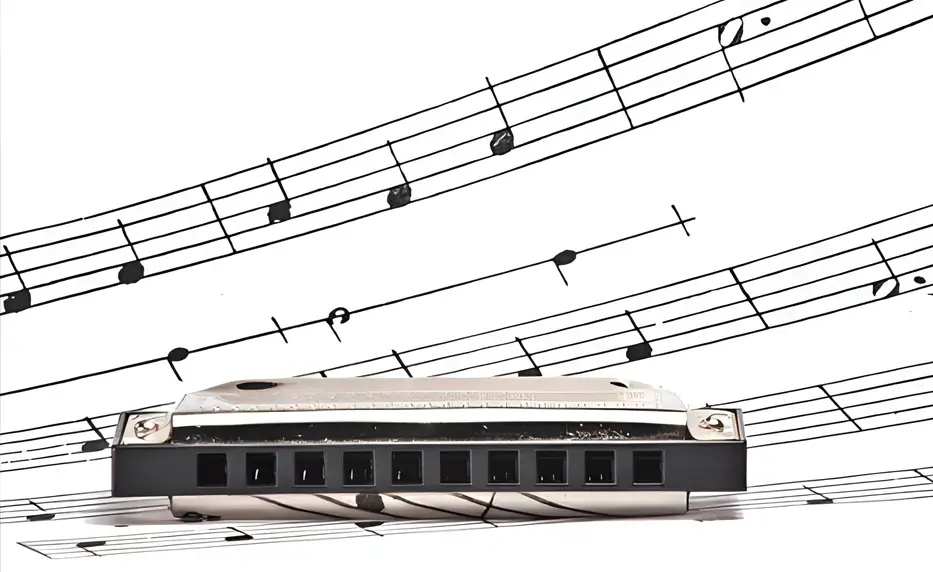Learning beginner harmonica tips is the first step toward mastering one of the most accessible and versatile instruments in music. The harmonica offers portability, affordability, and the ability to play across multiple genres from blues and folk to rock and country. Whether you’re picking up your first harmonica or looking to refine your foundational skills, understanding the essential techniques and practices will set you on the path to becoming a confident player.
Choosing Your First Harmonica
Selecting the right harmonica is crucial for beginners. The diatonic harmonica in the key of C is universally recommended for those just starting out. This 10-hole harmonica is tuned to the C major scale, making it intuitive to learn basic melodies and songs. The key of C is also the standard for most instructional materials, tutorials, and beginner songbooks.

Avoid starting with chromatic harmonicas or tremolo models, as these introduce unnecessary complexity for new players. Instead, invest in a quality diatonic harmonica from reputable manufacturers like Hohner Marine Band, Lee Oskar Major Diatonic, or Suzuki Bluesmaster. While budget options exist, spending between twenty to forty dollars ensures better sound quality, durability, and ease of playing. Cheap harmonicas often have poor reed response and tuning issues that frustrate beginners and hinder progress.

Consider purchasing a harmonica with a plastic comb rather than wood for your first instrument. Plastic combs are more durable, easier to clean, and less affected by moisture. As you advance, you can explore different comb materials and their tonal characteristics.
Proper Holding Technique

How you hold your harmonica significantly impacts your tone quality and playing comfort. Position the harmonica with the numbers facing upward and the low notes on your left side. Use your left hand to grip the harmonica between your thumb on the bottom and index finger on top, keeping your grip firm but relaxed.
Your right hand should cup around the back and right side of the harmonica, creating an acoustic chamber. This cupping technique allows you to modify your tone by opening and closing your hands, creating vibrato effects and tonal variations. Keep your hands relaxed to avoid tension that restricts your playing fluidity.
Position the harmonica comfortably against your lips, not too deep into your mouth. Your lips should create a seal around the holes without excessive pressure. This positioning allows clear note production while maintaining the flexibility to move smoothly along the harmonica.
Breathing Techniques for Harmonica Players
Proper breathing is fundamental to producing quality harmonica tones. Unlike other wind instruments, harmonica playing requires both inhalation and exhalation to produce different notes. This bidirectional airflow can feel unnatural at first but becomes second nature with practice.
Breathe from your diaphragm rather than shallow chest breathing. Diaphragmatic breathing provides better air control, supports longer phrases, and produces fuller tones. Place one hand on your stomach while breathing—you should feel it expand outward as you inhale and contract as you exhale.

Start with gentle airflow rather than blowing hard. Many beginners make the mistake of using too much air pressure, resulting in harsh tones and bent notes. The harmonica responds to controlled, steady airflow rather than forceful breathing. Think of breathing through the harmonica naturally, as if you’re sighing or having a relaxed conversation.
Practice breathing exercises without the harmonica. Inhale steadily for four counts, hold for two counts, exhale for four counts, and pause for two counts. This rhythmic breathing pattern develops the breath control necessary for smooth harmonica playing.
Getting Single Clean Notes
Producing single, clean notes is the first technical challenge for harmonica beginners. There are two primary methods: tongue blocking and puckering. Most beginners find puckering easier initially, though tongue blocking offers advantages for certain techniques later.
To pucker, form your lips into a small “O” shape as if whistling or drinking through a straw. Position this small opening over a single hole on the harmonica. The key is making your mouth opening smaller than you might initially think necessary. Practice in front of a mirror to verify you’re covering only one hole.
If you hear multiple notes simultaneously, your mouth opening is too wide. Gradually reduce the opening until you achieve a single, clear tone. Move slowly along the harmonica, playing each hole individually while maintaining consistent tone quality.
Tongue blocking involves placing the harmonica deeper in your mouth and using your tongue to block the holes you don’t want to sound. Press your tongue flat against the left side holes while leaving the rightmost hole open. This technique is more challenging initially but enables advanced techniques like octaves and tongue slaps.
Regardless of which method you choose, consistency is crucial. Stick with one technique until you’re comfortable before exploring alternatives. Many advanced players use both methods depending on the musical context.
Learning Your First Songs
Starting with simple, familiar melodies builds confidence and reinforces proper technique. Songs with repetitive patterns and limited note ranges are ideal for beginners. Classic choices include “Mary Had a Little Lamb,” “When the Saints Go Marching In,” and “Oh Susanna.”
Use harmonica tablature to learn songs efficiently. Tablature indicates which holes to play and whether to blow or draw. Numbers represent hole positions, arrows or positive/negative signs indicate blow or draw, and the system requires no prior music reading knowledge.
Break songs into small sections. Master two or three notes before adding more. Play each section slowly until accurate, then gradually increase speed. This methodical approach prevents frustration and builds solid technical foundations.
Record yourself playing to identify areas needing improvement. Listening objectively to your recordings reveals timing issues, unclear notes, and tonal inconsistencies you might miss while playing. This feedback loop accelerates your learning process significantly.
Explore different musical styles to maintain motivation. The harmonica adapts beautifully across genres, and exposure to various styles helps develop versatility. Listen to different songs featuring harmonica to understand its expressive possibilities and inspire your practice sessions.
Understanding Harmonica Notation and Tablature
Harmonica tablature provides a straightforward notation system specifically designed for harmonica players. Unlike standard musical notation, tablature directly tells you which hole to play and whether to blow or draw air.
Numbers one through ten represent the ten holes on your diatonic harmonica, with one being the lowest note on the left. A number alone or with an upward arrow indicates a blow note, while a number with a downward arrow or minus sign indicates a draw note. For example, “4” or “4↑” means blow into hole four, while “4↓” or “-4” means draw from hole four.
Bends are indicated with additional symbols once you progress to intermediate techniques. Curved arrows, apostrophes, or specific bend indicators show when to bend notes down in pitch. However, as a beginner, focus on playing clean, unbent notes before attempting bends.

Rhythm notation in tablature varies by source. Some tablature uses spacing to indicate timing, while others include standard rhythmic notation above the numbers. Understanding basic note values—whole notes, half notes, quarter notes, and eighth notes—helps interpret timing even in simplified tablature.
Create your own tablature for songs you learn by ear. Writing down the hole numbers as you figure them out reinforces learning and creates personalized reference materials. This practice also develops your ear training and understanding of melody structure.
Developing a Practice Routine
Consistent practice is more valuable than lengthy sporadic sessions. Establish a daily practice routine of fifteen to thirty minutes rather than practicing for hours occasionally. Regular, focused practice builds muscle memory, reinforces techniques, and maintains steady progress.
Structure your practice sessions with specific components. Begin with a five-minute warm-up playing long tones on each hole, both blow and draw. This warm-up relaxes your embouchure, checks your harmonica’s condition, and establishes proper breathing patterns.
Dedicate ten to fifteen minutes to technical exercises. Practice scales, single note exercises moving up and down the harmonica, and rhythmic patterns. These exercises might feel repetitive but they develop the foundational skills necessary for playing songs effectively.
Spend the remaining time learning and practicing songs. Work on new material while reviewing previously learned songs to maintain your repertoire. This balance between new challenges and consolidation ensures continuous progress without overwhelming yourself.
Track your progress in a practice journal. Note what you worked on, difficulties encountered, and improvements observed. This documentation motivates you by showing tangible progress and helps identify patterns in your learning journey.
Common Mistakes to Avoid
Beginners often use too much air pressure, thinking louder means better. This approach produces harsh tones, causes premature reed fatigue, and makes note control difficult. Instead, focus on smooth, controlled breathing that produces clear tones at moderate volumes.
Rushing through songs before mastering proper technique creates bad habits difficult to correct later. Speed develops naturally with accurate, slow practice. Prioritize playing correctly over playing quickly, and speed will follow as your muscle memory strengthens.
Neglecting proper posture and hand positioning leads to tension and limits tonal possibilities. Maintain relaxed shoulders, breathe naturally, and hold the harmonica comfortably. Physical tension restricts airflow and reduces playing endurance, so regularly check your body for unnecessary tightness.
Skipping fundamental exercises in favor of playing only songs leaves technical gaps in your abilities. While songs are more enjoyable, exercises develop specific skills that make song playing easier and more expressive. Balance structured practice with creative exploration.
Comparing your progress to others creates unnecessary frustration. Everyone learns at different rates depending on prior musical experience, practice consistency, and natural aptitude. Focus on your personal improvement rather than external comparisons.
Caring for Your Harmonica
Proper maintenance extends your harmonica’s lifespan and ensures optimal performance. After each playing session, tap the harmonica gently against your palm or leg to remove moisture accumulated in the reed chambers. Hold it with the holes facing downward to let gravity assist drainage.
Rinse your mouth before playing to minimize food particles and debris entering the harmonica. This simple habit significantly reduces buildup that affects reed response and requires cleaning. Never eat or drink anything except water immediately before playing.
Store your harmonica in a protective case when not in use. Cases prevent dust accumulation, protect against physical damage, and maintain proper humidity levels. Avoid leaving your harmonica in extreme temperatures, as heat and cold affect reed tuning and comb materials.
For deeper cleaning, diatonic harmonicas can be rinsed with lukewarm water monthly. Remove excess water by shaking and tapping, then allow the harmonica to air dry completely for twenty-four hours before playing. Never use hot water, which can damage reed tuning and warp wooden combs.
Consider learning basic harmonica maintenance like reed adjustment and replacement as you advance. While beginners should focus on playing, understanding your instrument’s mechanics helps troubleshoot issues and deepens your connection to the harmonica.
Listening and Learning from Others
Immersing yourself in harmonica music accelerates learning by developing your musical ear and understanding stylistic nuances. Listen actively to legendary harmonica players across different genres. Blues players like Little Walter, Sonny Boy Williamson, and James Cotton demonstrate expressive techniques and traditional blues styles.

Folk and country players such as Charlie McCoy and Mickey Raphael showcase the harmonica’s melodic possibilities in different musical contexts. Rock and pop players like John Popper and Stevie Wonder expand the harmonica’s vocabulary in contemporary settings. Studying diverse players broadens your musical perspective and inspires creative exploration.
Pay attention to tone quality, phrasing, breathing patterns, and how professionals use silence and dynamics. Notice how they start and end notes cleanly, use vibrato for expression, and structure their melodic phrases. These observations inform your own playing development even before you can execute the techniques yourself.
Attend live performances when possible or watch video performances online. Observing hand positions, breathing techniques, and physical approach provides insights not available through audio recordings alone. Many professional players also offer instructional content specifically designed for learners at various levels.
Join online harmonica communities and forums to connect with fellow learners and experienced players. These communities offer support, answer questions, share resources, and provide encouragement throughout your learning journey. The social aspect of music learning enhances motivation and exposes you to different perspectives.
Essential Equipment and Accessories
Beyond your primary harmonica, several accessories enhance your playing experience and practice effectiveness. A harmonica case or holder protects multiple instruments if you expand your collection to different keys. Cases also keep your harmonicas organized and readily accessible for practice sessions.
Consider investing in quality headphones or earbuds for practicing with instructional videos and backing tracks without disturbing others. Good audio equipment helps you hear subtle details in demonstration recordings and accurately monitor your own playing when recording practice sessions.
A metronome develops steady timing and rhythmic accuracy. Digital metronomes, metronome apps, or online versions provide adjustable tempo settings to practice at various speeds. Starting slowly with a metronome and gradually increasing tempo builds solid rhythmic foundations essential for playing with other musicians.
Recording equipment, even simple smartphone voice recorders, provides valuable practice feedback. Recording yourself reveals mistakes and progress you might not notice while playing. Review recordings critically to identify areas needing improvement and document your advancement over time.
Instructional books, online courses, and video tutorials supplement self-guided learning. Choose resources appropriate for your current skill level and learning style. Many excellent free resources exist online, though structured paid courses often provide more comprehensive, organized learning paths for beginners.
Setting Realistic Goals and Expectations
Establishing achievable goals maintains motivation throughout your harmonica learning journey. Set short-term goals like playing a specific song, mastering single notes, or practicing consistently for two weeks. These immediate targets provide regular accomplishment feelings that sustain long-term commitment.
Long-term goals might include performing for friends and family, playing with other musicians, or mastering advanced techniques like bending and tongue blocking. Break these larger objectives into smaller milestones that mark progress toward your ultimate aspirations.
Understand that progress isn’t always linear. Some skills develop quickly while others require extended practice before breakthrough moments occur. Plateaus are normal learning experiences where visible progress slows even though underlying skills are consolidating. Persistence through plateaus separates successful learners from those who abandon their instruments.
Celebrate small victories along your learning path. Successfully playing a complete song, receiving positive feedback, or noticing improved tone quality deserves recognition. These celebrations reinforce positive associations with practice and motivate continued effort.
Remember that musical ability develops through accumulated practice hours rather than innate talent alone. While some people progress faster initially, consistent practice eventually produces results for everyone willing to invest time and effort into learning.
Frequently Asked Questions
What is the easiest harmonica to learn for beginners?
A diatonic harmonica in the key of C is the easiest for beginners. The C major scale is straightforward to learn, most instructional materials are written for C harmonicas, and they’re affordable. Look for a 10-hole diatonic model from reputable brands like Hohner, Lee Oskar, or Suzuki.
How long does it take to learn harmonica for beginners?
Most beginners can play simple songs within 2-4 weeks of consistent practice. Developing intermediate skills typically takes 3-6 months, while mastering advanced techniques like bending notes may require 6-12 months or longer. The key is practicing 15-30 minutes daily rather than sporadic longer sessions.
Do I need to know music theory to play harmonica?
No, you don’t need music theory knowledge to start playing harmonica. Many successful harmonica players learn by ear and through tablature notation. However, understanding basic music theory can accelerate your progress and help you improvise more effectively as you advance.
How do I hold a harmonica correctly?
Hold the harmonica with your left hand between your thumb and index finger, with numbers facing up and low notes on the left. Cup your right hand around the back to create a chamber for tone control. Keep your grip relaxed, position it comfortably against your lips, and ensure you can move it smoothly left and right.
What are the common mistakes beginners make when learning harmonica?
Common mistakes include playing too hard (causing a harsh tone), not getting single clean notes, holding the harmonica incorrectly, breathing from the chest instead of the diaphragm, and trying advanced techniques too early. Beginners also often neglect regular practice schedules and skip proper warm-up exercises.
How do I clean and maintain my harmonica?
Tap out moisture after each playing session, rinse your mouth before playing to prevent debris buildup, and store your harmonica in a protective case. For deeper cleaning, rinse diatonic harmonicas with lukewarm water monthly, let them air dry completely, and never expose them to extreme temperatures. Avoid sharing harmonicas to maintain hygiene.
Beginning Your Harmonica Journey
Starting with beginner harmonica tips provides the foundation for a rewarding musical experience. The harmonica’s accessibility makes it perfect for musicians of all ages and backgrounds, requiring no prior musical training to begin. By choosing the right instrument, developing proper technique, establishing consistent practice habits, and maintaining realistic expectations, you’ll progress steadily toward your musical goals.
Remember that every accomplished harmonica player started exactly where you are now, facing the same challenges and uncertainties. The difference between those who achieve proficiency and those who give up is simply persistence and consistent practice. Your harmonica journey is uniquely yours—embrace the learning process, enjoy small victories, and let your musical voice develop naturally through dedicated exploration of this remarkable instrument.

